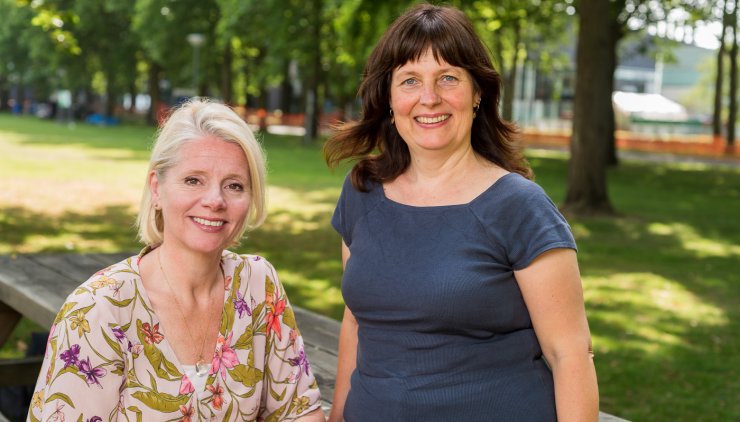-
14 september
More attention to diversity is good for everyone

Elke Groeneveld (Personnel and Organisation) and Dimphy Hooijmaijers (Education and Research) are part of the taskforce on accessibility and inclusion. This taskforce focuses on awareness, information provision and personnel policy. How are we doing at Fontys in that area?
Dimphy: 'We recently carried out a survey. The research showed that students sometimes feel excluded within Fontys. For example, a student told us that fellow students sometimes suggest going out for lunch or drinks together. She wanted to join in, but dropped out because she didn’t have enough money and was ashamed to say so. Another example: 'Another student always asked if the light in the lecture hall could be switched on, even though there was enough light. It turned out that he was hard of hearing and could only follow the lecturer properly if he could read lips. He needed sufficient light for that. Apparently we sometimes take it for granted that a certain situation is OK for everyone.'
Labour market
That our society and also Fontys must become more inclusive is beyond dispute for the two of them. Elke: 'It is also simply an economic necessity. We no longer have the luxury of keeping our borders closed. The shortages on the labour market are too acute. That means we have to recruit from a broad target group and not, for example, from a white male or female aged, say, 35. Our vacancy texts and our hiring policy have to change.
Working with diversity
Elke knows that the call for diversity comes from both institutes and students. We regularly receive questions from institutes about a more diverse personnel policy. Recently from Journalism. They see that the media landscape is becoming more diverse and inclusive. But we still mainly deliver the same students. One of the reasons is that our staff is not diverse enough. In order to attract other students, you need more diversity in your workforce. Role models. People you can emulate'.
But Elke believes that a more diverse workforce is not the solution in itself. The director of a Fontys institute told us that his staff was very diverse, but that all sorts of clubs had formed within its ranks. In short: you have to learn to work with diversity. It does not happen automatically and it is actually never finished.
Wickerwork
When we think of diversity, we often think of things like skin colour, gender or sexual orientation, but there is more. Elke: 'We work with Movisie's diversity framework, a model of twelve aspects. It also includes age and health, for example. The model is useful for testing our recruitment policy, among other things. It is common knowledge that during a job interview the decision to hire someone is taken in ten seconds.
For a more diverse workforce, we could look more at objective criteria. We need to structure our job interviews better and rely less on gut feelings. If we keep hiring the same kind of people, the workforce will never become more diverse.
Mail your initiative
Do you know of an initiative in the field of accessibility and inclusion that should be featured here? If so, send an e-mail to Dimphy Hooijmaijers.
